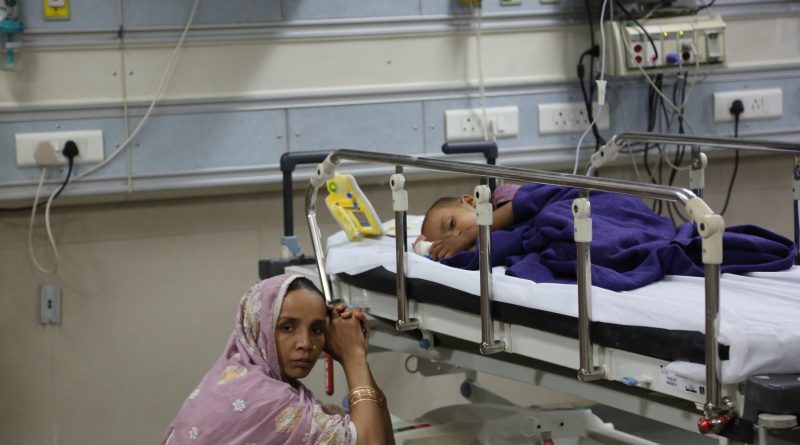Opportunities and Challenges
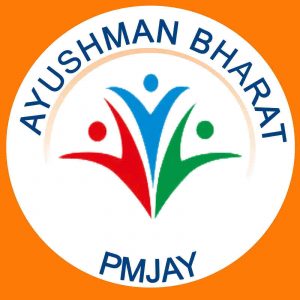 Ayushman Bharat can be a game changer as it will provide health cover to 10 crore families. But this scheme should not become a victim of poor governance. A lot of thought process is required to go into its implementation. A robust system should be developed where resources available with both the public and the private sector are pooled, utilised and managed to achieve the desired goals
Ayushman Bharat can be a game changer as it will provide health cover to 10 crore families. But this scheme should not become a victim of poor governance. A lot of thought process is required to go into its implementation. A robust system should be developed where resources available with both the public and the private sector are pooled, utilised and managed to achieve the desired goals
By Amresh K Tiwary
Ayushman Bharat Yojana or Pradhan Mantri Jan Arogya Yojana (PMJAY) is a centrally sponsored scheme launched in 2018, under the Ayushman Bharat Mission of the Ministry of Health and Family Welfare for a New India -2022. Also known as Modicare, the scheme aims at making interventions in primary, secondary and tertiary care systems, covering both preventive and promotive health, to address healthcare holistically. It is an umbrella of two major health initiatives namely1.5 lakh health & wellness centres (HWC) and National Health Protection Scheme (NHPS), launched in budget proposals for year 2018-19. Looking at the sheer size and quantum of work load, it would be imperative that resources available with public and private sector are pooled, utilized and managed to achieve the desired goals under the overall gambit of universal health coverage (UHC).
The government has announced to launch the HWCs with Budget allocation for Rs 1200 crore to bring promotional, preventive and primary healthcare system closer to the homes of people. These centres will provide comprehensive healthcare, including for non-communicable diseases and maternal and child health services. These centres will also provide free essential drugs and diagnostic services. Contribution of private sector through CSR and philanthropic institutions in adopting these centres is also envisaged.
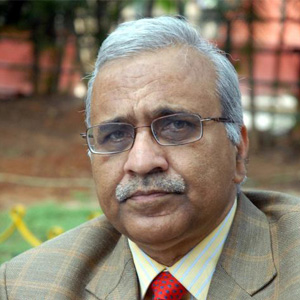 According to Dr Girdhar Gyani, Director General, Association of Healthcare Providers, India (AHPI), considering that we have about 1.5 lakh sub-centres available, it will be in fitness of things that these sub-centres are upgraded into HWCs which are closest to the community. The first point of referral for such HWCs in normal course would be nearby existing PHC/CHC to provide the package of comprehensive primary healthcare. It will have further linkages with the district hospitals and tertiary care teaching hospitals. For sub-centres to be effective in the new role of HWC, re-engineering of existing structure and resources will be required to enable it to provide comprehensive primary care including Maternal Healthcare Services, Neonatal and Infant Healthcare Services, Management of Communicable and Non-Communicable Diseases along with necessary diagnostic services etc.
According to Dr Girdhar Gyani, Director General, Association of Healthcare Providers, India (AHPI), considering that we have about 1.5 lakh sub-centres available, it will be in fitness of things that these sub-centres are upgraded into HWCs which are closest to the community. The first point of referral for such HWCs in normal course would be nearby existing PHC/CHC to provide the package of comprehensive primary healthcare. It will have further linkages with the district hospitals and tertiary care teaching hospitals. For sub-centres to be effective in the new role of HWC, re-engineering of existing structure and resources will be required to enable it to provide comprehensive primary care including Maternal Healthcare Services, Neonatal and Infant Healthcare Services, Management of Communicable and Non-Communicable Diseases along with necessary diagnostic services etc.
Few states including Haryana, Punjab and J&K are known to have initiated converting some of their sub-centers into HWCs. Haryana & Punjab governments have planned to train community health officers, who would manage these centres, with specialist doctors from nearby PHC or CHC visiting HWCs on a regular basis.
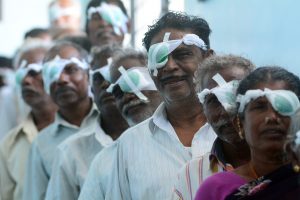
Role of Private Sector
The private sector has huge opportunity for adopting few sub-centers as HWCs. AHPI has proposed to the government that its member hospitals will be willing to manage some of the HWCs within the same budget, which government provide for existing sub-centre. The manpower would be fully deployed by the private sector provider, with provision of specialist doctor visiting on need basis from main hospital or consulting through telemedicine as appropriate. Entry of private sector in a way will also generate healthy competition as well as cooperation between public and private sector. Some of the additional suggestions for effective functioning of proposed HWCs are appended below:
1- Maintenance of electronic family file for every house in the community should become integral part of proposed HWCs, so that community statistics is adequately monitored and whenever required corrective steps could be taken. There should be a separate division/agency to conduct community surveys to keep track of lifestyle diseases, infections, immunisation and other illnesses and advise people on lifestyle changes which are required.
2- Maternity and child welfare schemes are very important. Birth and death registers and wedding registers are important. Support will be required for early diagnosis of pregnancy and managing the expectant mothers throughout their difficult times.
3- Creating specialty clinics in some of the most underserved areas of the country as per local requirements for specific disease/epidemic control, where doctors could visit these centres on a periodic basis engaging in both treatment and preventive care.
4- There is a requirement for leveraging technology. Telemedicine services can be effectively utilised to connect remote areas with taluk & district hospitals, in view of the scarcity of qualified doctors. With good penetration of mobiles in the country, this should be easily possible. There is a requirement for having paramedical staff to provide primary care in rural areas as there is a huge gap in the availability of doctors/nursing staff. More healthcare workers should be given training and certification to treat minor illnesses.
5- Use technology to drive positive healthcare outcomes – App based Remote Monitoring Technologies for creating awareness and improving treatment/management of chronic conditions (home healthcare) wherever frontline healthcare workers are involved, use digital connect to transform them into “knowledge supervisors”. This, by way of imparting “Skill training” through an innovate combination of smart phones and web-based technologies to train the healthcare workers in areas. We can bring the entire radio imaging (besides ultrasound) on to an electronic/cloud based platform.
6- There is a need for emphasis on clean model environment in a health & wellness centre in line with Prime Minister’s ‘Clean India Campaign’. Supply of clean water, 24×7 electricity, clean linen and good clean examination room for patients should be basic elements. It will also require all-round maintenance of facility along with un-interrupted Wi-Fi connection.
7-The Government should progressively aim at adequate space around HWC (10-acre campus) so that staff could be provided with living quarters to look after emergencies.
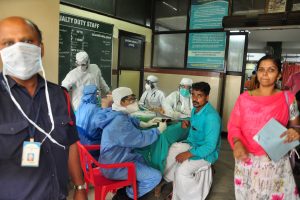
National Health Protection Scheme: This flagship programme under Ayushman Bharat will provide coverage up to Rs 5 lakh per family per year for secondary and tertiary care hospitalisation. This will be the world’s largest government funded healthcare programme. Adequate funds will be provided for smooth implementation of this programme.
Dr Girdhar Gyani said, “If there were adequate public sector hospitals, then the scheme could have been delivered through network of CHCs, district hospitals and government teaching hospitals. But considering that about 60% IPD beds are with the private sector, it is inevitable that private sector will have an important role in NHPS. The scheme, however, should ensure self-sustenance of hospitals. We have experience of operating central government insurance schemes like CGHS, ECHS, ESIC, RSBY etc. Similarly, there are state government sponsored schemes in states like Andhra Pradesh, Telangana, Tamil Nadu, Maharashtra, Gujarat, Rajasthan, Karnataka etc. There are enough success/failure lessons from these schemes, which could be made use of in designing near perfect model to deliver NHPS.”
Some of the suggestions are appended below;
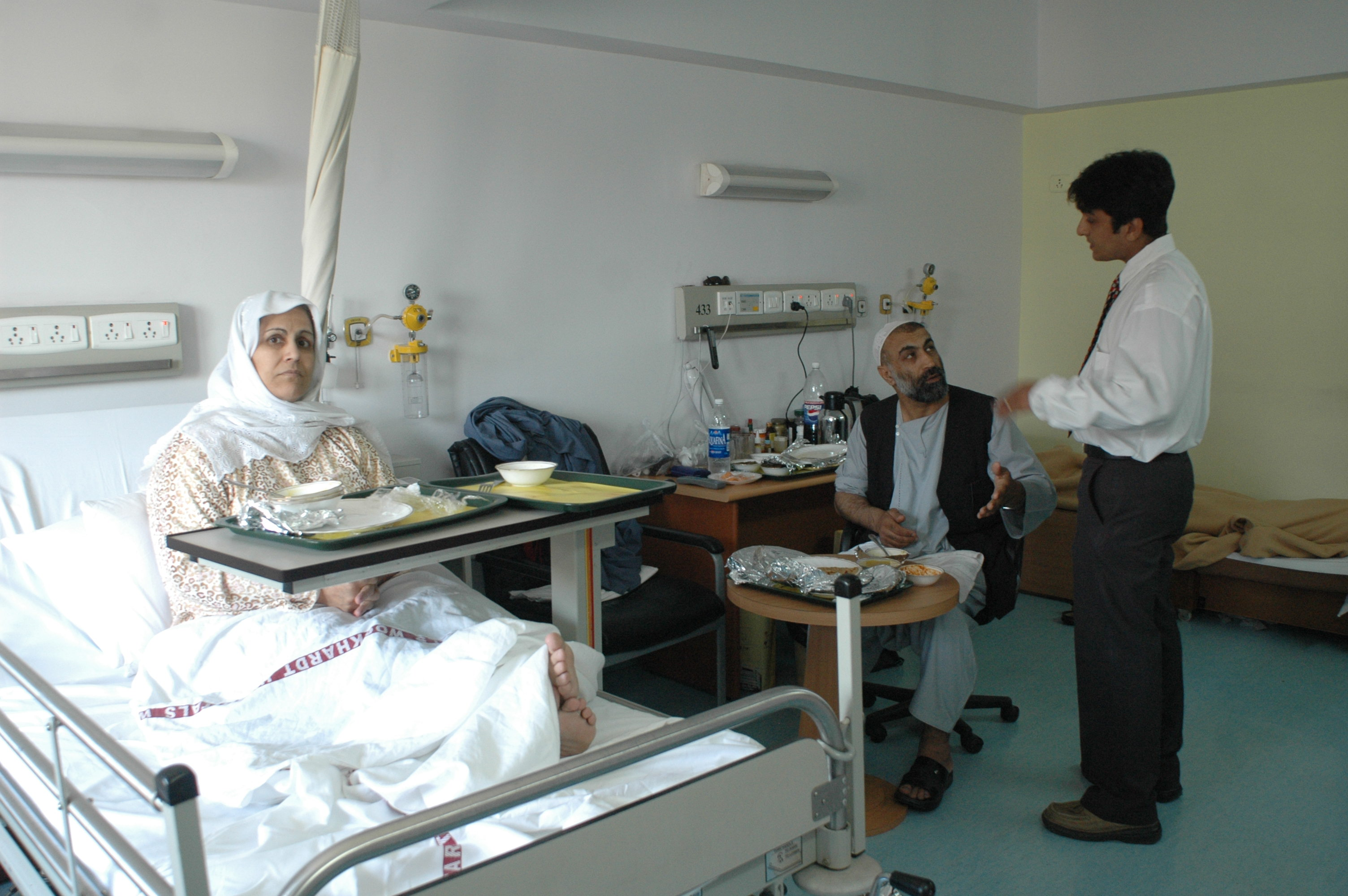
1- REFERRAL MECHANISM: NHPS’ success will critically depend on strengthening of 1.5 lakh HWCs, which will not only help in lowering incidence but also serve as a strong guard to appropriately channelise referrals for secondary and tertiary procedures. The government may consider putting together a ‘negative list’ of procedures that should strictly be treated only in the public hospitals
2- EMPANELMENT OF HOSPITALS: World over, quality and patient safety in healthcare is driven either through regulation or by payers. NHPS being government run insurance scheme, it should be imperative that patient safety must be the key consideration while empanelling of hospitals. NHPS as a rule should not empanel any hospital unless it has been verified based on established minimum criteria on quality/patient safety. Some of state run insurance schemes have made entry level NABH certificate as minimum criteria for empanelment. We have about 650-hospitals accredited by NABH. Then there are 700-hospitals which are certified under entry level standard by NABH. To begin with this number (650+700) can become critical mass of empaneled hospitals. In case there is need to rope in more hospitals, these can be provisionally empaneled based on defined structural criteria (in terms of number of beds/specialties etc.) as decided by MOHFW, with the condition that they will obtain at least entry level certification by NABH within 1-year. In time to come, we may implement ‘pay for performance’ model where reimbursement is linked to clinical & managerial outcomes.
3-FIXING OF RATES: It is unfortunate that no scientific study has been done till date to compute actual costing of delivering variety of medical procedures under different settings. It will be appropriate that MOHFW should endeavor on urgent basis to ascertain the actual costs to private hospitals in rendering services to beneficiaries under NHPS. The government may institute an independent agency with representatives from IIM, cost accountants from professional consulting companies, major hospitals and insurance companies to carry out a costing study, which may find out the cost of delivering healthcare in a model hospital. By using appropriate factor, these costs could be computed for various settings/categories of hospitals based on geographical location, size, level of specialty, status of accreditation etc. Scheme may also decide what procedures should be referred to which category of hospitals to ensure safety as well as optimum and cost effective utilisation of the hospital network. Over and above, patients can be given option for co-payment in case they want to upgrade the level of care – for example pay extra out of pocket for private room or extra for FDA implants as required. The rates fixed once, should be subjected to periodic revision. As incentive for quality, the rates for full NABH accreditation could be fixed at 15% higher than rest.
4-ON-LINE PAYMENT/TRACKING: The NHPS system should be digitised, where hospitals can submit bills online and even the payment should be made online. The payment should be reimbursed in a time-bound manner. For example, 50% money could be transferred within 10-days of submission of bills. Balance 50% could be transferred within next 20-days. In case of delay, there should be provision to pay interest; this aspect is important as present schemes have failed largely on this account that payments are delayed for months. State government schemes like in TN, Telangana and AP have transparent and efficient system of digital tracking of patients and treatment line, which can be studied and adopted for NHPS. Arogya Mitra is good concept that has has been in practice in TN-CM scheme.
5-Grievance Redressal: It is important that NHPS has built-in grievance redressal mechanism, which can listen grievances from beneficiaries as well as from empaneled hospitals. While beneficiaries will have grievances from treating hospitals, the empaneled hospitals will have grievances mainly on account of delay in payment and some time the un-accounted deductions from the submitted bills. Both are important to be addressed for the long term success of scheme.
6-Patient Verification: The scheme is meant for those who are part of SECC (Socio Economic Caste Census) list and have an Aadhaar number, as enrolled. This would eliminate all malpractices/inefficiencies observed on ground during enrolment. Further, the enrolled members should be on a name basis rather than generic family name of 1+4. This would avoid impersonation and frauds on the ground. In case one is part of SECC list but does not have Aadhaar, clear guidelines should be provided for alternative ways of identification to avoid any issues with reimbursements later.
7-Scheme Regulator: NHPS may designate an independent Quality regulator, who would lay down clear guidelines with respect to re-use of single use device, use of generic medicines etc. It should be applicable for all empanelled providers under the scheme so as to enable delivery of quality services at an affordable cost. An appropriate medical audit system should be in place.
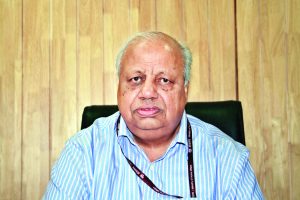 Dr A K Agarwal, Professor of Excellence, Medical Director Innovation, Apollo Hospital and Ex Dean, Maulana Azad Medical College, New Delhi, said, “It is first time since independence that the government has come with bold initiative with focus on healthcare. As mentioned above NHPS is going to be world’s largest UHC scheme. All efforts, therefore, must be channelised to make it happen. Once we succeed, it will revolutionaries the complete health delivery systems in the country. The world is keenly awaiting to see how such a mega scheme is run and sustained. It is going to be a boon for BPL families to mitigate serious illness cases. It will also give boost to healthcare industry, which is passing through anxious moments due to sustainability issues. All in all, it should be an exciting journey which hopefully will open up the road to a happy and healthy India.’
Dr A K Agarwal, Professor of Excellence, Medical Director Innovation, Apollo Hospital and Ex Dean, Maulana Azad Medical College, New Delhi, said, “It is first time since independence that the government has come with bold initiative with focus on healthcare. As mentioned above NHPS is going to be world’s largest UHC scheme. All efforts, therefore, must be channelised to make it happen. Once we succeed, it will revolutionaries the complete health delivery systems in the country. The world is keenly awaiting to see how such a mega scheme is run and sustained. It is going to be a boon for BPL families to mitigate serious illness cases. It will also give boost to healthcare industry, which is passing through anxious moments due to sustainability issues. All in all, it should be an exciting journey which hopefully will open up the road to a happy and healthy India.’
The kind of pre-emblem which has been proposed in the scheme is to cover all the people Below Poverty Line (BPL), rural masses. Moreover, it is over and above the previously introduced scheme – National Health Protection Mission (NHPM), whose primary objective was to cover BPL citizens with capacity of around 30,000.
What is good about Ayushman Bharat?
According to Dr Vinay Aggarwal, Past National President, Indian Medical Association, New Delhi, insurance worth Rs 5 lakh per annum is a huge sum and will cover most of their health issues. Additional pioneering benefit is that all the primary health centers and the present sub centers are being converted into wellness centers.
Each primary health centre has five sub-centres. The Government’s direction in the current proposed Ayushman Bharat scheme to convert all the sub-centers into preventive and wellness centers is a very good initiative by the Government. This will have huge impact in the betterment of preventive illnesses and is a good move that needs to be appreciated.”

The Problem at hand
Dr Suneela Garg, HOD, Department of Community Medicine, Maulana Azad Medical College, New Delhi, said, “Since independence health sector has suffered due to the fact that less importance was given to health. In comparison to developed countries like US & UK, where over 15% of the GDP is allocated for betterment of health, India only spends around 1-1.3% on an average. Indian health care scenario can only improve when these numbers are increased and health made as a fundamental right to all citizens.”
This scheme has many inbuilt messages which also highlights the Government’s approach and attention towards improving the primary health structure. But with certain modifications in the system or infrastructure of the primary healthcare centres, things can be made better. If the villagers are covered with 5 lakh insurance, then they can get a much better treatment.
Health needs to be made a priority sector. Also, medical education in rural India needs improvement. One medical college should be there in every third district, but according to the current medical education system, about 200 districts have only 450 medical colleges, which is very less. If we take the examples of UT like Puducherry, it has 11 medical colleges. If the government builds more medical colleges particularly in tribal areas, or areas which do not have medical healthcare or are looking for medical education, then the overall development of that area is bound to happen with the opening of medical colleges and better healthcare.
The Government should also make changes in policy making to prohibit any further opening of medical colleges in areas that already have such colleges in abundance. Providing permissions to open new medical colleges in districts with no medical colleges or remote areas will help in the overall betterment.
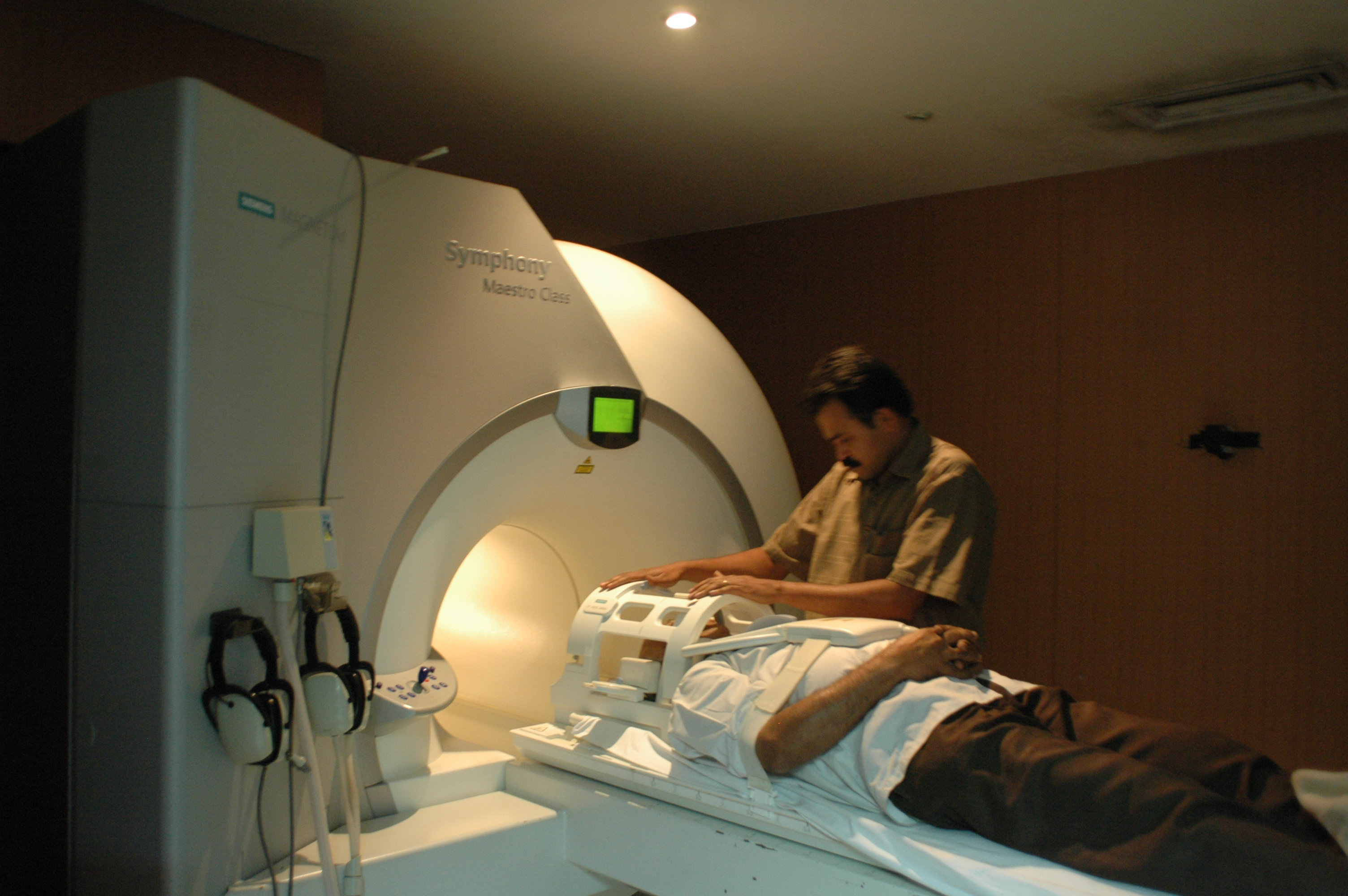
Is there a scarcity of doctors?
Much has been written about the dearth of doctors in the country. The country produces over 90,000 MBBS doctors annually with 67,000 doctors passing out from 489 medical colleges in India and approximately 20,000 doctors who join as foreign medical graduates. But the problem arises with the fact that the available post-graduation seats are limited to only 30,000, and the remaining 60,000 doctors may have only 1750 vacancies to join in any of the wellness centers. If the number of seats and number of vacancies are increased, the so-called dearth of doctors can easily be tackled.
If the system is made robust, these 60,000 doctors can be employed in the sub-centers on regular basis, instead of providing them contractual and ad hoc appointments.
For instance, if MBBS graduates from metro city are appointed in some far flung rural areas on a contractual basis, they may hesitate to go. But if certain changes are made in the policies, in terms of incentivising their appointments on regular basis, healthcare in rural areas is bound to improve. Moreover if the servings in rural areas are incentivised with their marks for PG entrance exam, the number of doctors willing to go to rural areas will increase drastically.
Being an insurance scheme – who will reimburse?
Being an insurance scheme with cashless transaction, reimbursement to hospitals remains a hidden aspect, whether the reimbursement is to be provided by the Government or the insurance sector. Again the setback remains that if the Government reimburses, then CGHS is already suffering. Payments in CGHS and ESI are not made for months together and the hospitals truthfully are discouraging such patients to admit.
A robust system should be developed by taking more and more private players into confidence, be it a private healthcare organisation or leaderships from private sector and involvement of the Indian Medical Association before implementing this scheme. Such Public Private Partnerships will be able to work shoulder to shoulder and to frame rules and work out efficiently as far as different rates are concerned.
What needs to be changed in policy making?
This is one of the most wonderful schemes ever thought of, but the concern is that it should not become a victim of poor governance; the proper thought process has to go in. The blatant example of this poor governance is the National Rural Health Mission, which was started 10 -15 years back to improve the primary health structure. But even after investing crores and crores of money, the Government had to abandon the mission due to high corruption rate.
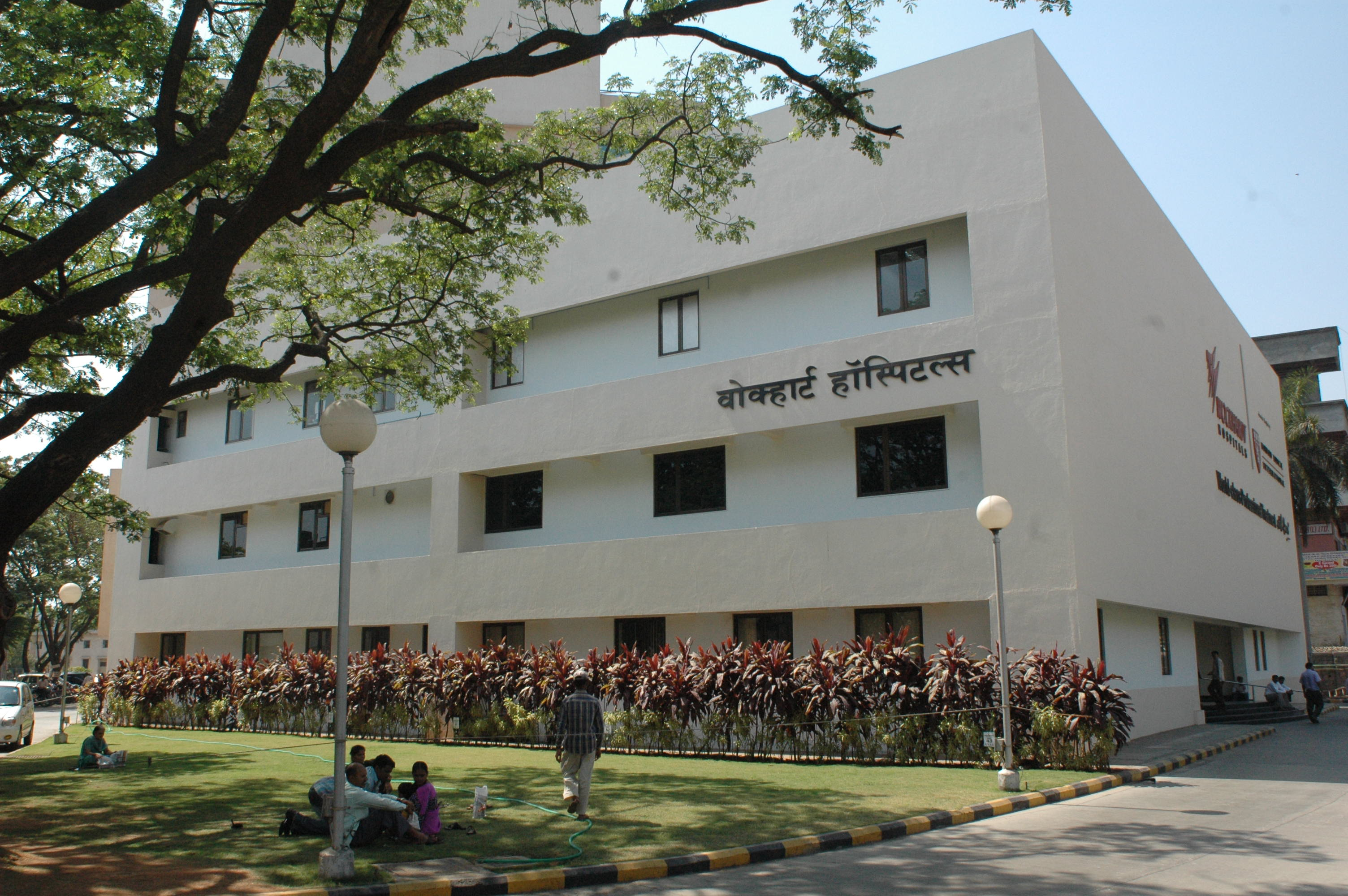
Involve more private players
So far in this scheme no organisations like IMA or any other private players have been consulted. The authorities seem shaky and cloudy as far as the thought process is concerned, and even the methodology of implementation of this scheme seems unclear.
With the participation of private sector which is almost 80% will be a defining moment for this scheme. The government should be in no hurry, and involve more and more private sector, have consultations with them, talk to IMA, and tag to all possible stakeholders before launching this scheme.
The rates for various medical procedures should be decided in consultation with various stakeholders including IMA. In fact, low unaffordable or unmanageable rates will breed corruption and make this scheme unviable.
There should be transparent, clear cut directions along with a robust reimbursement system in this scheme to be implemented. Instill MBBS doctors at sub-centres and focus on improving primary healthcare
Sub-centers can be run by MBBS doctors if proper employment is provided to them. Instead of spending lavishly in building super-specialty hospitals, make most of the investments in improving the primary health structure of the country, be it the primary health centers or sub-centres. It is a question of concern why and how some of the states are doing extraordinarily well? States like Kerala have a very robust primary health structure and recently Tamil Nadu and Gujarat have also started doing well by giving a lot of attention to the primary healthcare infrastructure.
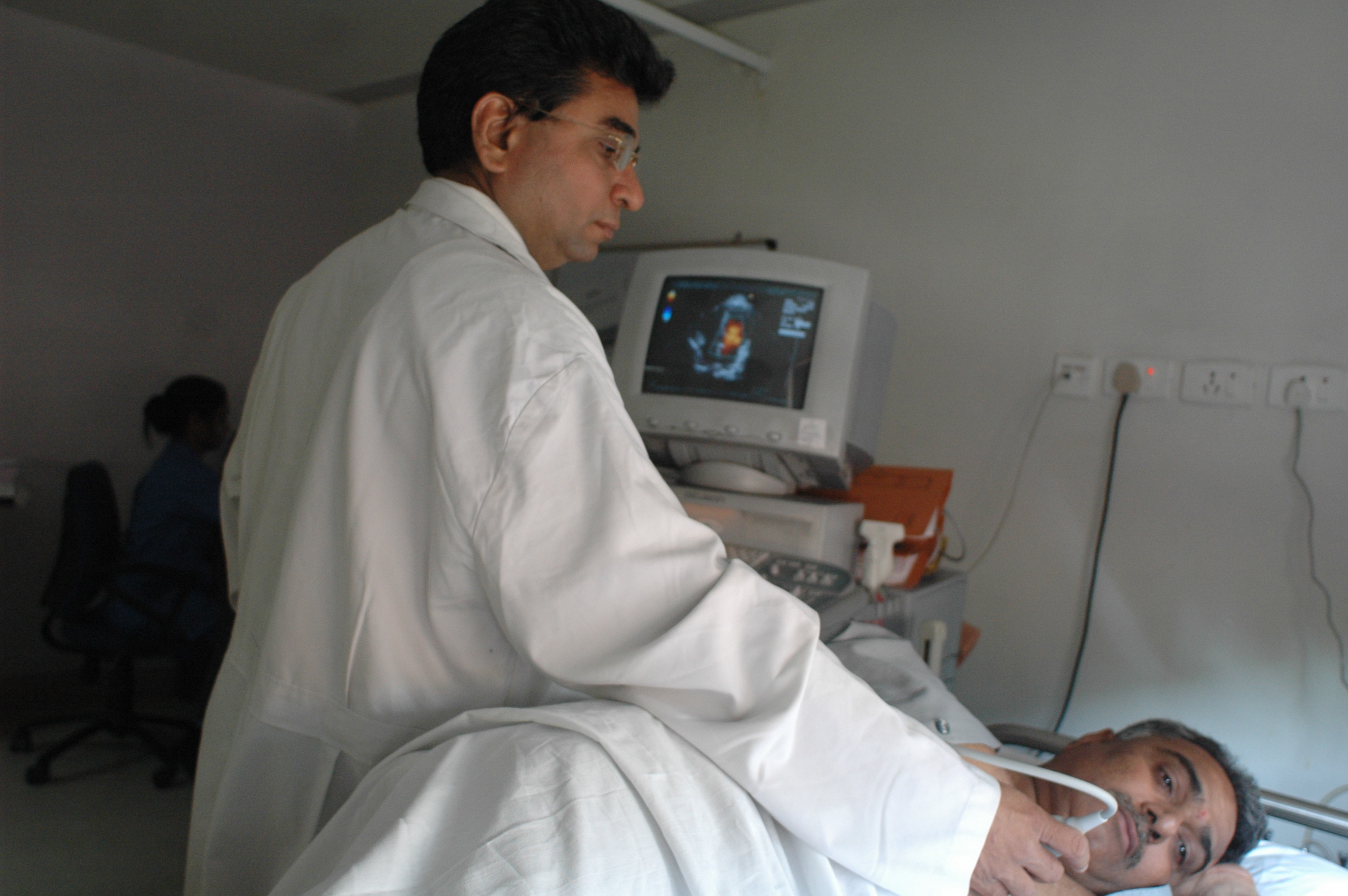
Scheme requires a federal structure
A federal structure is required in this scheme to be successful which implies that some of the states already have their own schemes, and some are over and above this. As inbuilt in the pre-emblem, 40% expenses to be provided for by the state and 60% by the centre should be implemented properly along with better participation of the states. States should be directed or requested to see that it should become one scheme where everybody is at par looking at it. As far as services are concerned in government and private hospitals, not only primary, but secondary and tertiary care hospitals, neighboring nursing home, at least maternity benefits should be properly given, accident victims should properly get management issues.
Pattern of diseases is changing, from communicable to non-communicable diseases. If we take a look 25 years back, deaths were majorly attributed to malaria, dengue, small pox, jaundice and other water borne communication diseases but much more lifestyle related and non communicable diseases are coming to the fore. So change in the pattern of illnesses also needs to be taken care of as far as the preventive health is concerned.
Apart from some kind of a quality control, a streamlined reimbursement process, and private sector needs be taken in confidence if we want Ayushman Bharat to be success story.
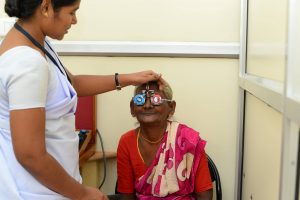
Taking Healthcare Closer to Masses
Association of Healthcare Providers (India) represents the vast majority of healthcare providers in India. It is registered under the Society Registration ACT-1860 as a “not for profit” organisation. It educates its members and at the same time, advocates with the government, regulatory bodies and other stakeholders on issues, which have bearing on enabling its member organisations in delivering universal health coverage to the community at large. AHPI has been working on building capacity in Indian health systems with focus on patient safety and affordability of healthcare services.
AHPI was formally rolled out in October 2012 as a voice of the healthcare industry. Till AHPI was formed, there was no pan India association for healthcare providers. Right from the beginning, it has been functioning as ‘not for profit’ organisation that wanted to engage with the Government and other stakeholders to participate in health policy formulation and execution. AHPI chose its motto as: ‘Educating and Advocating for Well Being of Common Man.’
AHPI is unique in a way that it does not charge membership fee. Some of its patrons generously donated money for its operations for the first couple of years. In the past three years, the organisation has not drawn any major donation as it generates revenue through its activities including organising of events and training programs. AHPI today is a self-sustainable organization.
GOVERNING STRUCTURE:
AHPI as mentioned above is registered as society. It is governed by Governing Body, which comprised eight founding members drawn from seven states to make it a pan India society. In order to engage hospitals effectively, there are 14-state/regional chapters covering entire India, with each chapter having its president, secretary and members as part of state executive committee. Each state chapter committee has three sub-committees, each working on (i) advocacy, (ii) education and training and (iii) public engagement. State committees regularly hold meetings in different districts of state. President of each chapter gets nominated as member in central executive (governing) committee. This makes AHPI as true representative body pan India.
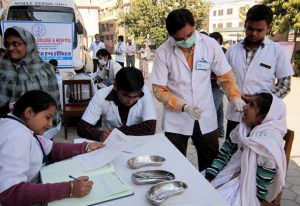 Ayushman BharatAyushman Bharat
Ayushman BharatAyushman Bharat
AHIEVEMENTS:
Quality Empanelment: AHPI joined hands with NABH in pursuing IRDA to make NABH accreditation mandatory for all hospitals wanting to get TPA empanelled. This has generated big push towards quality and patient safety in the country.
Electricity Tariff: AHPI worked with the Government to reduce electricity tariff for healthcare institutes to make healthcare more affordable. The electricity cost is generally Rs 700 to Rs 800 per day per bed for a tertiary care healthcare institute. The Karnataka government was first to act and reduce tariff by 15%. Based on this other state governments have initiated similar steps.
Clinical Establishment Act: In a major step, AHPI successfully persuaded the government of Karnataka not to include cost of individual procedures in the recently released Clinical Establishment Act. It may be relevant to mention that till date no agency has worked out costing of medical procedures and therefore fixing of rates without any scientific basis would have proved disaster and made hospitals unsustainable and also would have compromised on patient safety.
Medical Procedure Costing: AHPI initiated a unique costing study under the aegis of Government of Karnataka with key members like IIM (B), NABH, CMC Vellore, Medical Department of ISRO etc. This study was based on clinical pathway methodology to arrive at actual cost incurred for 20-selected procedures. The study showed that reimbursement under various government health insurance schemes i.e. CGHS, Yashasvini and Vajpayee Arogya Shree, fall short of actual cost of medical procedures by huge margin. It also showed that different government schemes have different rates for the same procedure.
Increase in PG seats/CPS: AHPI has worked to persuade MOHFW and MCI to address shortage of specialists. India is producing 63,835 MBBS graduates every year but have less than 25000 PG seats. The USA, on the other hand, has 40,000 PG seats as compared to 20,000 UG seats. The government alone employs 65,697 MBBS doctors, whereas specialists’ vacancies are reported to be more than 80% in community health centers (CHCs) alone. In such a scenario, we cannot improve on health indicators including IMR/MMR. AHPI right at the time of inception in year 2012-13 launched the movement ‘Equal PG-UG seats’ to draw attention of government to increase PG seats. With untiring efforts put in by AHPI under the leadership of Dr Devi Shetty, the government has now recognized diploma courses of CPS, which will meet the shortage of specialists in next 3-5 years.
Support to Medical Tourism: There have been many complaints about medical tourism patients being cheated by facilitators. This was adversely affecting image of Indian hospitals, without their involvement. AHPI along with other industry bodies, urged the Ministry of Commerce to have an empanelment scheme to accredit Medical Value Travel Facilitator, under which six facilitators have been accredited by NABH. Their names are available on NABH website. The Ministry of Commerce is actively promoting the concept through diplomatic channels. AHPI is actively engaging the member hospitals to promote the concept.
The Ministry of Commerce is also working on ambitious project involving export of trained allied health workforce. AHPI in association with MOHFW and IGNOU are working on training of various categories of allied healthcare workforce to meet demand within the country as well as in export of such services.
NHPS/ AYUSHMAN BHARAT: Ayushman Bharat or National Health Protection Scheme with a cover of 5-lakh for BPL families, is going to be the biggest health insurance scheme anywhere in the world as it would target nearly 40% of the country’s population. As public health system is not adequate, the scheme will also provide spur to opening of new hospitals in tier-II and tier-III cities. AHPI is gearing up in facilitating member hospitals in empanelment in the scheme. AHPI has submitted pricing details of some of the procedures to MOHFW and has strongly recommended to fix prices of procedures scientifically, without which many hospitals will not be able to come forward to be part of this ambitious scheme.
Capacity Building in Health Systems: Healthcare industry has two challenges; one is ensuring patient safety and second is making healthcare affordable. AHPI is constantly working on enabling members to meet these twin challenges. AHPI Institute of Healthcare Quality has launched a series of short term training programmes. Four of these programmes have been endorsed by the West Bengal University of Health Sciences. These include certified infection prevention and control nurse, which for the first time introduces concept of deploying Link ICN for each nursing station. AHPI has developed standards for green & clean Hospitals, which has been endorsed by respective ministers for health and environment. It has now been adopted as a certifiable standard by globally acclaimed quality certification body BVCI for the Indian market. AHPI has also facilitated BVCI in developing unique standards for certifying ICUs. Considering that most ICU patients get infected via ventilators and other means, this is going to be of big help in containing hospital acquired infection. The standard has been endorsed by Indian Society for Critical Care Medicine (ISCCM).
In a very significant initiative, AHPI collaborated with ISRO to adopt their best practices in terms of quality into health sector. Two pilot projects for (i) critical care medicine and (ii) emergency medicine have been successfully completed.
Adult Vaccination: AHPI has prepared an ambitious project on promoting adult vaccination. There are 11-vaccinations, which are recommended by CDC but are hardly known in our country. AHPI is shortly going to launch this program, aimed at protecting the vast segment of venerable population from a variety of diseases/epidemics.

